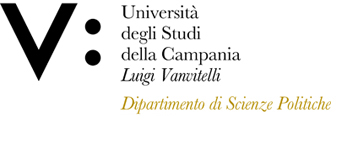Angelo DI FALCO
Insegnamento di STORIA DEL TURISMO E DEI BENI CULTURALI
Corso di laurea in SCIENZE DEL TURISMO
SSD: M-STO/02
CFU: 6,00
ORE PER UNITÀ DIDATTICA: 36,00
Periodo di Erogazione: Secondo Semestre
Italiano
| Lingua di insegnamento | Italiano |
| Contenuti | L’insegnamento di Storia del Turismo e dei Beni Culturali è costituito da un unico modulo. L’insegnamento è finalizzato a tracciare la storia relativa alla politica di tutela dei beni culturali. Dai primi provvedimenti volti alla difesa delle antichità, risalenti al Quattrocento, presi negli antichi stati italiani, agli editti del Seicento che cominciavano a manifestare l’interesse dei governi alla imagine degli stati all’estero e il relativo prestigio. Dalla normativa nazionale dopo l’unità italiana, assurta a riferimento internazionale, grazie alla importantissima Legge Bottai, agli ultimi provvedimenti del XXI secolo, allargando la prospettiva di analisi alla normative comunitaria e dei principali paesi europei. Pertanto si analizzeranno: |
| Testi di riferimento | Masi A., Per una storia dei Beni culturali. Dal Medioevo agli anni Duemila: in Italia e nei principali paesi europei, Venosa, Osanna Edizioni, 2020. |
| Obiettivi formativi | Conoscenza e capacità di comprensione (knowledge and understanding) Lo studente dovrà acquisire una conoscenza sufficiente degli argomenti e dei temi indicati nel programma di Storia del Turismo e dei Beni Culturali. |
| Prerequisiti | All’inizio delle attività lo studente deve avere una buona conoscenza della Storia moderna e contemporanea. |
| Metodologie didattiche | Il modulo attribuisce 6 CFU e prevede 36 ore di didattica frontale. Il metodo didattico è articolato in 18 lezioni frontali. |
| Metodi di valutazione | Il corso prevede una valutazione finale svolta dal docente. La valutazione del candidato avviene mediante colloquio orale con punteggio in trentesimi. La prova di valutazione per gli studenti-lavoratori può essere scritta o orale. La prova di valutazione scritta degli studenti lavoratori, in forma di questionario, sarà articolata in due sezioni: |
| Altre informazioni | Il superamento del modulo di Storia moderna e contemporanea è propedeutico ai fini della partecipazione al corso. |
| Programma del corso | In ragione del rapporto ore/CFU, il programma verte sugli argomenti di seguito indicate: |
English
| Teaching language | Italian |
| Contents | The course of History of Turism and Cultural Heritage is organized in one module. The course aims at studying history of policies of cultural heritage protection. Moving from first measures to preserve antiques, in the XV century, by ancient Italian states, to edicts in the XVII century, focused on governments care to protect the foreign image and reputation of states. From national laws, after Italian unification, which became an international reference, thanks to Bottai’s law, to the latest measures of the XXI century, comparing the analysis to the principal European countries and to the communitary laws. |
| Textbook and course materials | Masi A., Per una storia dei Beni culturali. Dal Medioevo agli anni Duemila: in Italia e nei principali paesi europei, Venosa, Osanna Edizioni, 2020. |
| Course objectives | Knowledge and under standing. The student shall acquire a sufficient knowledge of the topics and themes indicated in the program of History of Turism and Cultural Heritage. |
| Prerequisites | The student must have good Knowledge of Early modern an Modern History. |
| Teaching methods | The module assigns 6 CFU and includes 36 hours of frontal teaching. The teaching method includes 18 lectures . |
| Evaluation methods | The Course provides a final exam on the full programme of coursework, carried out by the Professor. The evaluation of the candidate will be held through an oral interview for which the score is expressed in grades from 1 to 30. The student-workers evaluation can be held through an oral interview or a written examination.. |
| Other information | The student must have passed the examination of Early modern and Modern History |
| Course Syllabus | Considering the hours/ CFU ratio, the program focuses on the following topics: |








